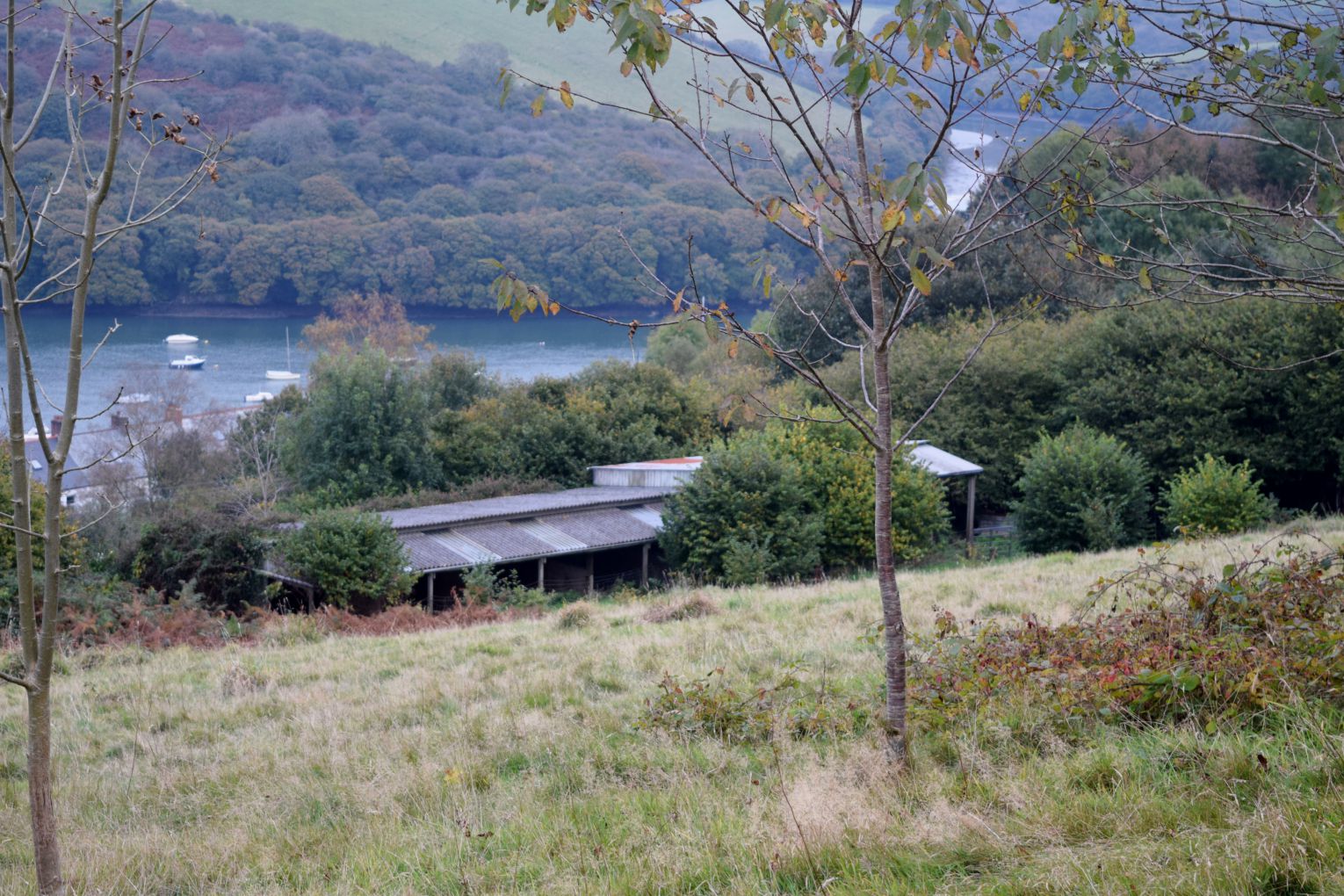Karen’s story of the Sanctuary continues with the ideas behind the project….

Our first couple of years were spent walking, observing and learning about what we had on the land. We discovered bluebells – thriving in the newly created light and space, native daffodils, foxgloves and common orchids. The trees seemed to stretch and breathe, and started to flourish. We were inspired by Martin Crawford’s story of creating an edible forest garden at Dartington, and planted the top, cleared field with a selection of apples, pears, nut trees, medlar, mulberry. Quince and plums. I also started a small patch trialling raspberries, gooseberries, hops and honeyberries, but the difficulties lay in protecting it as naturally as possible from deer and rabbits. The solution seemed to be letting the brambles grow back around, creating a thorn hedge. We named this field ‘Phil’s Forest Garden’, after our neighbour’s late husband who would have relished the task we had started, being endlessly energetic and creative.
As we got to grips with the land, our thoughts continued to wander towards the barn. It was pretty substantial, but not that useful, as we didn’t have animals, well, 4 Jacobs sheep for a season to help keep the grass down. Their parting and demise was so difficult, I have decided that I will never make a ‘proper’ farmer….
Our kayaking business was thriving, and we found people asking us about accommodation in the village. Apart from a small hotel at the more expensive end of the price range, and our neighbour’s one Air BnB room, there were only self catering properties in the village. The local Youth Hostel had closed – not through lack of interest, but the land and the building provided much needed funds, and an alternative, ‘container youth hostel’ was set up at the Eden Project a few miles away. We were also interested in our customer’s reactions on some of our trips – particularly the smaller sized groups – 6 or 8 people. They would set out as strangers, but by the time we reached our half way point, they would often gather together, sitting around a large table, and sharing their experiences. We realised that we wanted to carry on the conversation about wildlife and the environment off the river. We also wanted somewhere where our guests could stay in the village before or after paddling, possibly for a night or two. We pondered many ideas, but nothing quite seemed to feel right.
Then, as is often the case, a chance glance at a Facebook post that a friend had ‘liked’ led us on the path to the solution. It was essentially an advert for an Ecological building firm and Architects. We invited one of the partners – Martin Penk – to come and have a look at what we had, and whether he thought anything would be possible. He walked all around the land, and then the barn, and didn’t say much – we weren’t sure if that was good or bad! He said two important things for us – one, he was looking at the various views and framing them in his mind, as far as windows were concerned, and two, he liked to make a building that could be dismantled and all the component parts could be recycled, and there would be very little, if any, mark to show it had been there. That was it – he completely understood what was important to us. He came up with an initial design, and we decided to test the water with approaching the County Council with a pre planning application. This appeared on the surface to be completely futile – we were in an Area of Outstanding Natural Beauty (AONB), which has very stringent planning requirements, it was above the village in fields, so we thought the village might be against it, and the council would want to protect their reputation in being cautious with a bold idea.
We held an open day in or Boatshed, where anyone could come in and see our plans, and discuss their concerns, and David conducted tours around the land so that people could see the barn, and the context in which it sat. Then we approached the AONB and asked for their opinions, and although they quite often get a bad press for being very negative about new buildings, they couldn’t have been more helpful. They did a site visit to our Boatshed, looking at our existing business, and the proposed plans, and then walked with us to and around the land, to get a feel for what we were trying to achieve. We ended at the barn, and discussed various options. They left, in order to have a walk around the village, to see if it would impact in any way. They gave a few constructive comments, which we took note of, and generally supported us in our application.
We decided to approach through the preplanning route, and the council were not positive – they were reluctant to grant planning – they were concerned we would convert the building into a house, and felt we had not demonstrated a need for the accommodation and expansion. They would have been happier if we had put cabins or pods on the land. They are removable, so less risk, but it was completely alien to our idea of creating an inviting, inclusive community space, for people to exchange ideas and to enjoy the environment, together in a sustainable way. We wanted to be a showcase for this type of living.
So, although we were disappointed, we were undeterred……….

